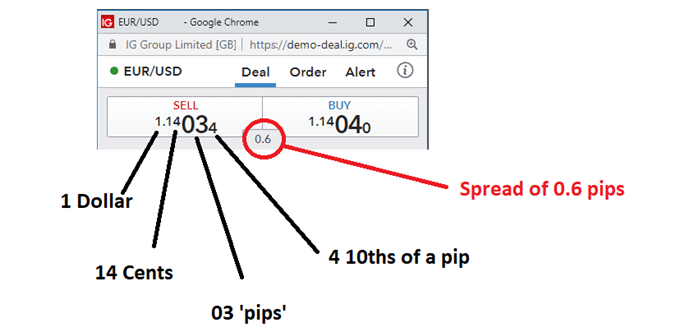Introduction

Image: financeillustrated.com
Picture yourself standing at the crossroads of global finance, where currencies from different corners of the world converge and dance in a mesmerizing ballet of exchange rates. In this vibrant marketplace, understanding how to read forex pairs is akin to deciphering the secret language that governs the ebb and flow of international money.
Forex, short for foreign exchange, encompasses the vast network of interconnected markets where currencies are bought and sold. At the heart of forex trading lie forex pairs, which represent the exchange rate between two currencies. Grasping the intricacies of forex pairs is crucial for navigating the dynamic world of currency exchange, whether as a seasoned trader or a curious individual seeking financial acumen.
Understanding Forex Pairs
A forex pair consists of two currencies, denoted as the base currency and the quote currency. The base currency is the one being sold, while the quote currency is the one being bought. For instance, in the widely traded EUR/USD pair, EUR represents the base currency (euros being sold), and USD represents the quote currency (US dollars being bought).
Reading a forex pair is relatively straightforward. The value quoted for a pair indicates the amount of the quote currency required to purchase one unit of the base currency. In our EUR/USD example, a quote of 1.2000 signifies that 1 euro can be exchanged for 1.2000 US dollars.
Market Conventions
Forex pairs are typically presented in three-letter currency codes following the International Organization for Standardization (ISO) 4217 standard. The first two letters denote the country or monetary union, while the third represents the specific currency. For instance, EUR stands for euros, USD for US dollars, and JPY for Japanese yen.
Interpreting Forex Rates
The value of a forex pair fluctuates constantly, influenced by a myriad of economic and geopolitical factors. Understanding the key drivers behind these price movements is paramount for effective forex trading.
A rise in the value of a forex pair indicates that the base currency is appreciating against the quote currency. This means that it will take more units of the quote currency to buy one unit of the base currency. Conversely, a decline in the pair’s value suggests that the base currency is depreciating against the quote currency.
Major and Minor Pairs
Forex pairs are broadly classified into two categories: major pairs and minor pairs. Major pairs involve the world’s most heavily traded currencies, including EUR/USD, USD/JPY, GBP/USD, and USD/CHF. These pairs are highly liquid, meaning they can be bought and sold quickly and efficiently with minimal slippage.
Minor pairs, on the other hand, involve currencies from smaller or less developed economies. They tend to exhibit higher volatility and lower liquidity compared to major pairs. Examples of minor pairs include EUR/GBP, AUD/JPY, and NZD/USD.
Conclusion
Delving into the world of forex pairs is an enriching endeavor that can empower individuals with valuable insights into global finance. By understanding how to read and interpret forex pairs, you gain the ability to make informed decisions in currency exchange and trading. The knowledge acquired from this article serves as a solid foundation for further exploration within the multifaceted realm of forex. Continue your journey, embrace the complexities of currency exchange, and navigate the global financial landscape with confidence and comprehension.

Image: www.dailyfx.com
How To Read Forex Pairs







